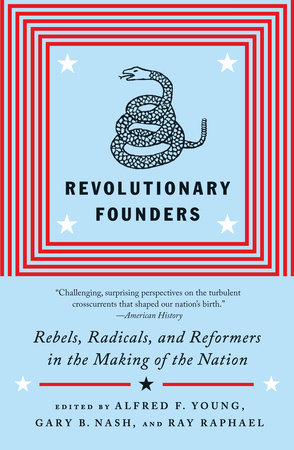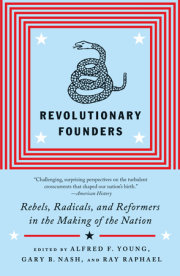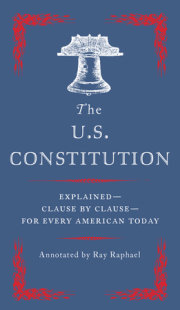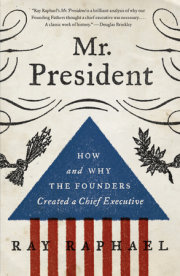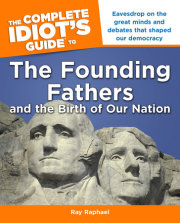Introduction
“To Begin the World Over Again”
Alfred F. Young, Ray Raphael, and Gary B. Nash
"All men are created equal,” our first founding document declared. Men are “endowed by their Creator with certain unalienable rights,” including “life, liberty, and the pursuit of happiness.” These truths might be self-evident, as the Declaration of Independence stated boldly, but historically they are enigmatic. A majority of the fifty-six men who subscribed to such noble thoughts enslaved other human beings. Thomas Jefferson certainly did, but he alone is not the puzzle, nor is slavery the only inconsistency. What, exactly, did Jefferson and his colleagues mean by “created equal”? Was a shoemaker’s son, at birth, really created equal to the son of a wealthy merchant? Did women have the same unalienable rights as men? Were blacks as well as whites entitled to life, liberty, and the pursuit of happiness? Such notions frightened most of the prominent men we think of today as the Founding Fathers.
Eleven years after the Declaration, when the framers of the Constitution devised “a more perfect union,” they did so, in part, to prevent an “excess of democracy” (a phrase they repeated often) from sweeping the young nation. The framers pejoratively labeled threats to their wealth and political power as “leveling” and those to their political power as “democratic.” Political, social, and economic equality were not what the framers had in mind. The disparity between words and deeds presents a particular problem for history- proud Americans who see the founders as guiding, patriarchal exemplars of their most cherished ideals. Searching for a moral resolution to this conundrum, typical American textbooks today assert that though all people were not treated equally in America in 1776, the Declaration of Independence set high goals for equal treatment in the future. This has become our nation’s standard fallback response. By treating liberty and equality as “promises” to future generations, we simultaneously acquit the founders of culpability and affirm our national commitment to these high goals. It’s a clever remedy, but factually it does not ring true. While some of the men who commanded slave labor hoped the institution would end someday, and a handful freed their slaves in their wills, that was as far as they went. With few exceptions, the gentlemen who drafted and signed our two founding documents opposed popular democracy and social equality. Our high goals were not theirs. They did not hold fundamental values that we accept as common currency today.
Although the Declaration of Independence claimed that people had “the right to alter or abolish” their form of government if they had exhausted all other means to express their grievances, the traditional founders did not wish to “alter or abolish” the institutional structures that protected their claim to rule. Once an elective government was established, traditional founders suppressed political rebellion. They did not want people to significantly alter, much less abolish, the structures they had just created. By contrast, many of their contemporaries wanted to strike at the heart of existing inequalities and radicalize governmental structures. Our protagonists in this book wanted to extend the lofty principles expressed in the Declaration of Independence to areas of life that the traditional founders never intended. These people did have a sense of the promise of the Revolution, and they wanted to fulfill it in their own time. Sharing no single agenda, they acted in the spirit of the words of Thomas Paine: “We have it in our power to begin the world over again.” The new nation was “a blank sheet to write upon,” Paine wrote,1 and on that sheet they placed their marks. Their actions were many and varied:
• Common farmers, artisans, and laborers often led the resistance to imperial policies, moving the colonies toward independence while reshaping the character of political life in North America.
• Slaves emancipated themselves by fleeing to freedom, then established their own viable communities.
•Women staked claims to “equality of the sexes” and to retain rights to their own property in marriage.
• Persecuted religious dissenters pushed for, and obtained, “the free exercise of religion.”
• Resisting the inequities of rank, soldiers carried democratic values into the military.
• Native Americans claimed sovereignty and fought to defend it, with a spirit of independence that paralleled that of colonists.
• Farmers threatened with the loss of their land resorted to collective action, including taking up arms.
• Printers published what they wanted, overriding attempts to repress them.
• Self- proclaimed democrats, turning that term of derision on its head, won the right of ordinary people to vote, hold public office, and pass judgment on their rulers.
Most of these “Revolutionary founders,” as we call them here, were radicals in the literal sense of the word: they promoted root changes in the very structure of social or political systems. One of those fundamental changes, of course, was independence from Britain, a goal they shared with the traditional founders, but often they pushed for others. Many of these people can also be considered rebels, either because they forcibly challenged British authority or because they confronted old or new hierarchies. Finally, some might best be described as reformers who sought to change a particular feature of society while leaving others intact.
Each of these rebels, radicals, and reformers moved the American Revolution in some direction the traditional founders did not want to take, extending it farther and deeper than a separation from the British Empire. They made the Revolution more revolutionary.
Copyright © 2011 by Alfred F. Young, Ray Raphael and Gary B. Nash. All rights reserved. No part of this excerpt may be reproduced or reprinted without permission in writing from the publisher.

